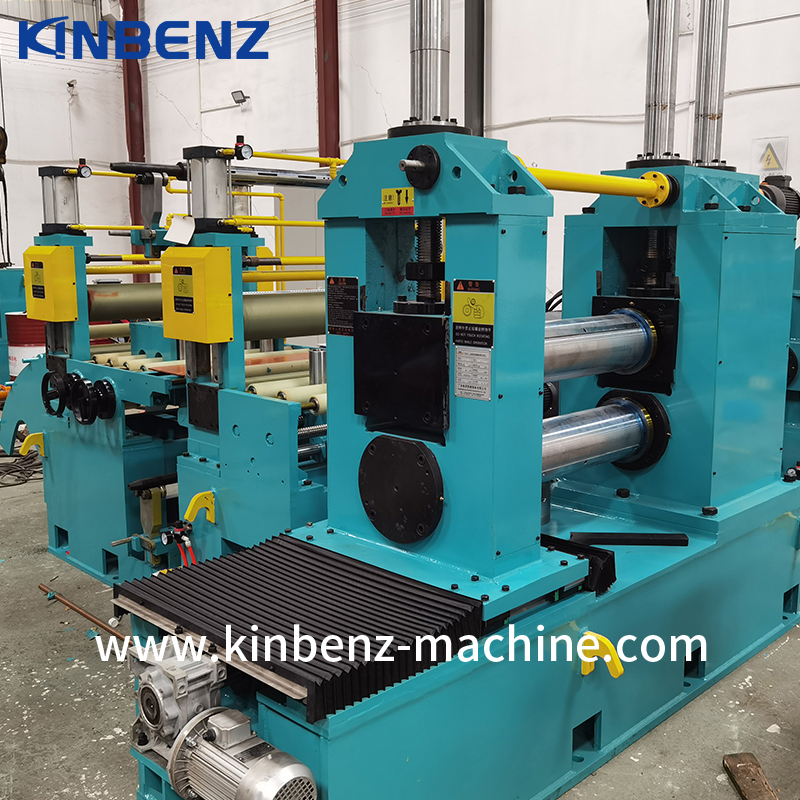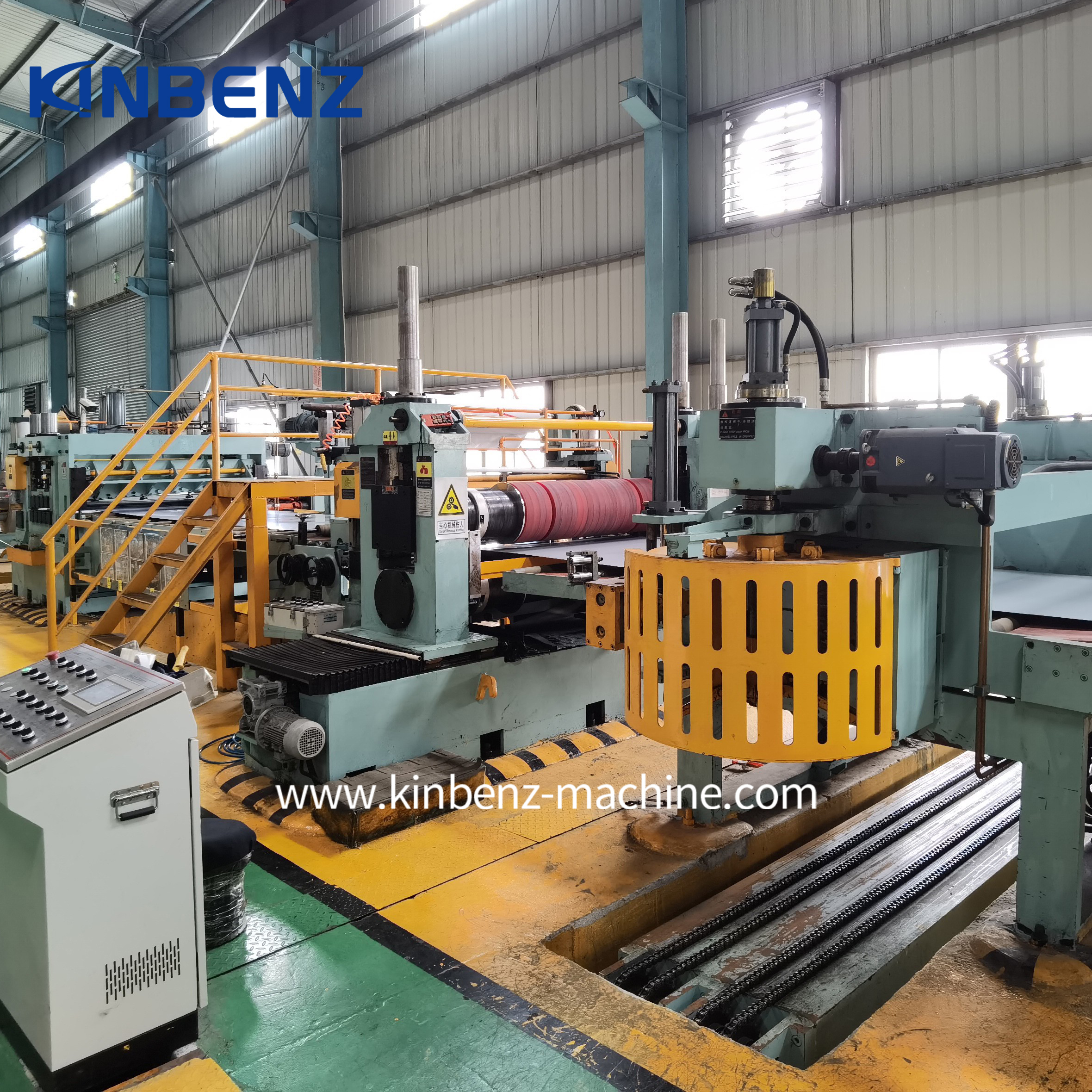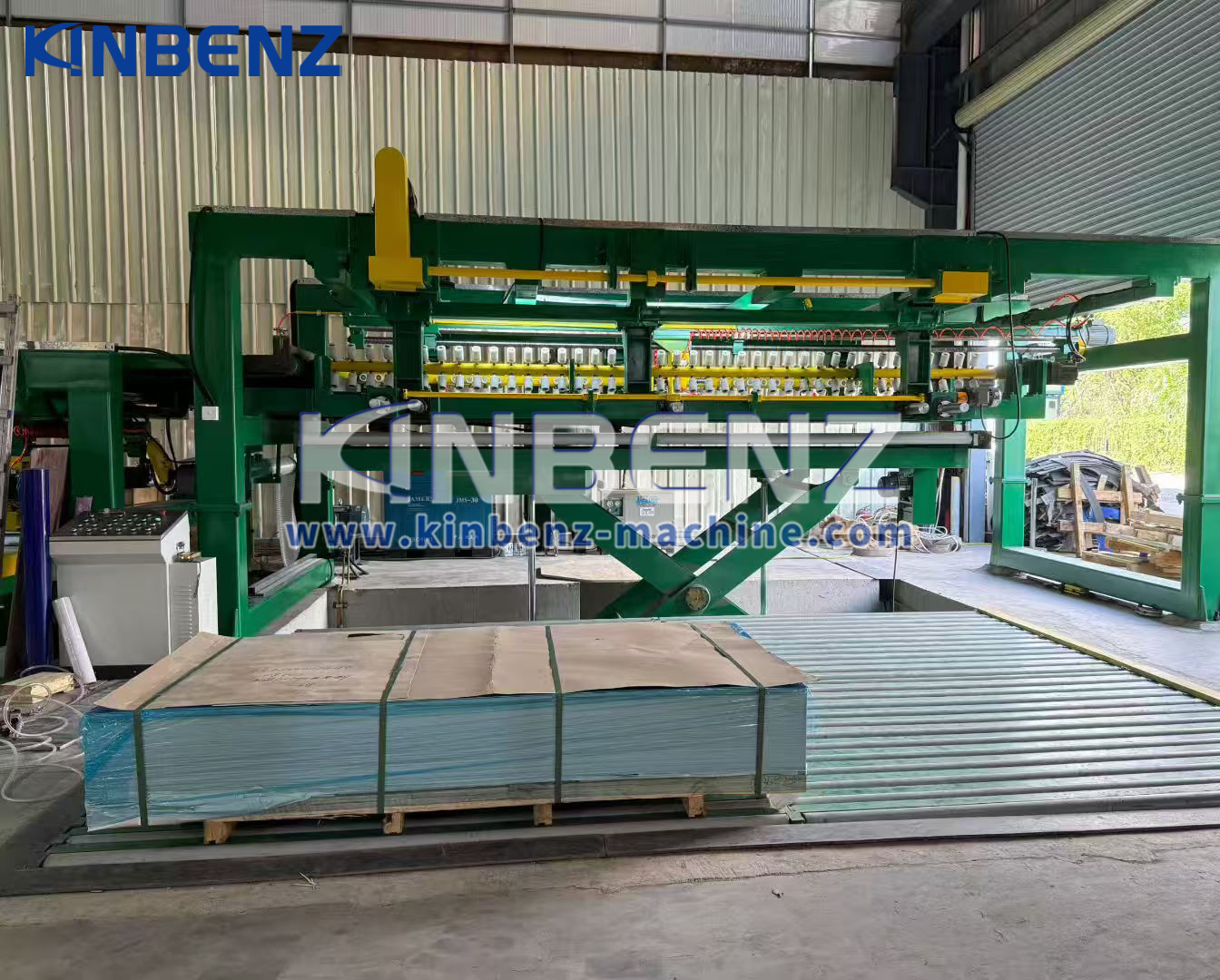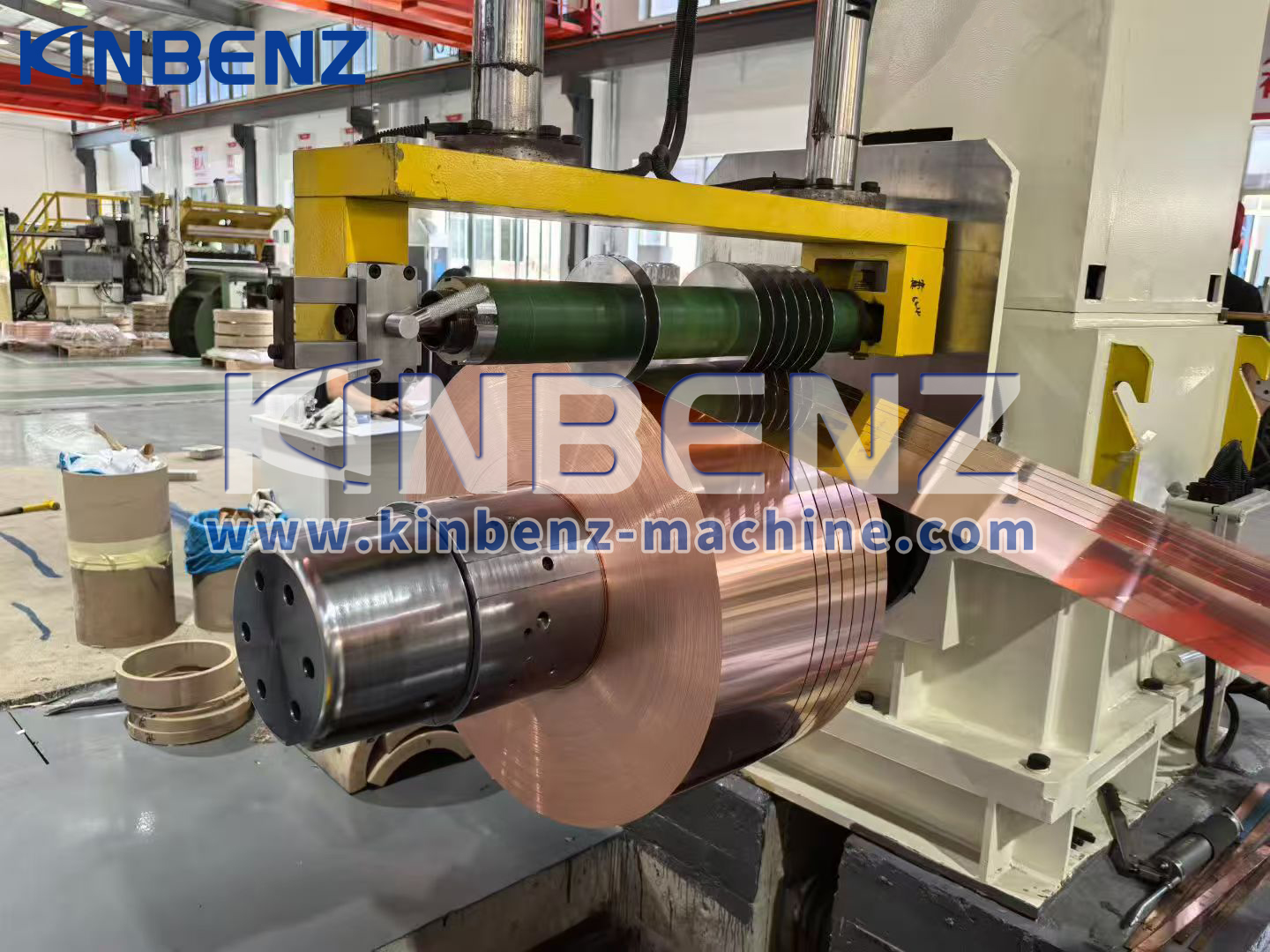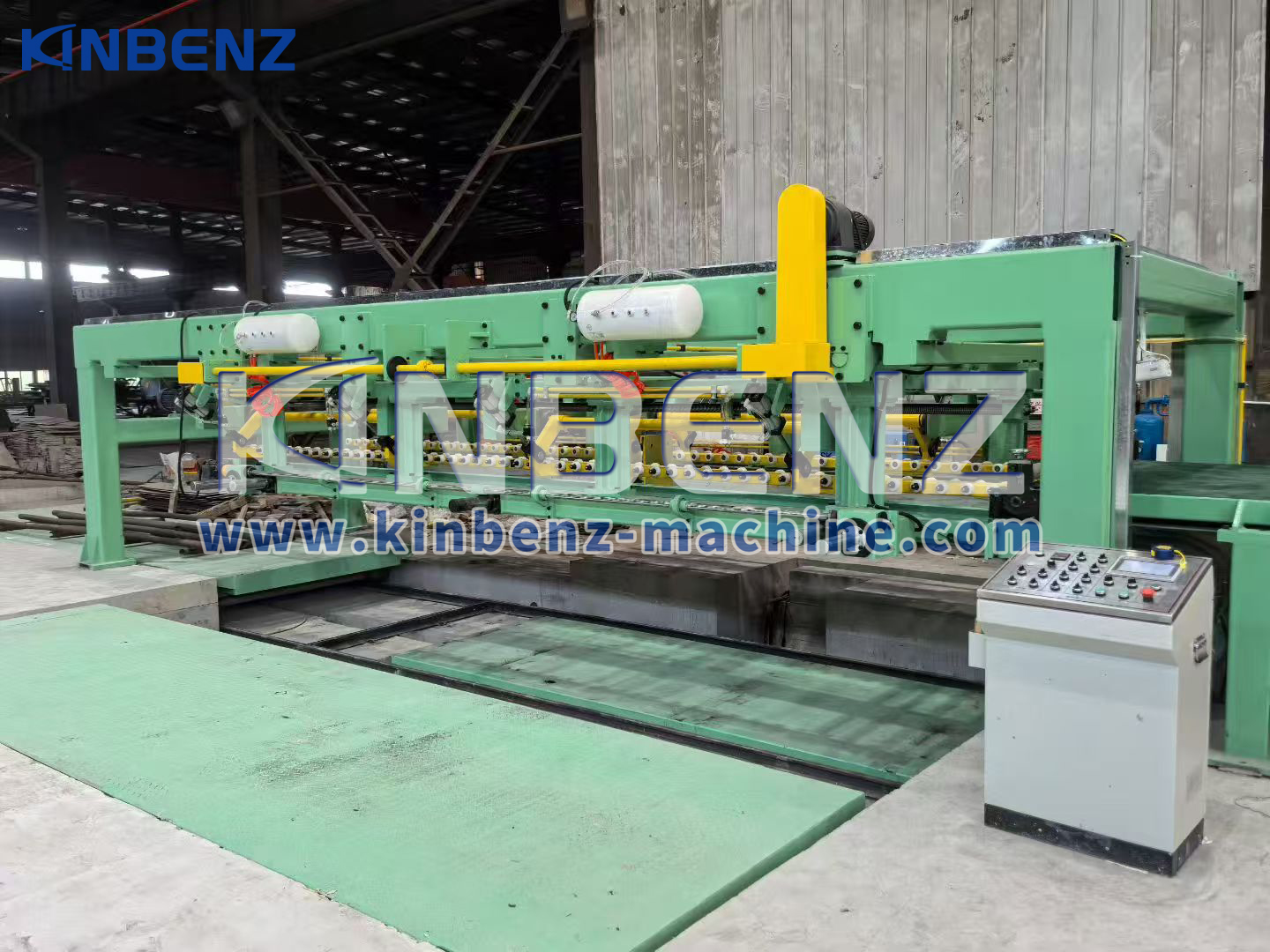|
|
Why These 4 Coil Specs Matter: The Key to Designing the Right Slitting Line for You
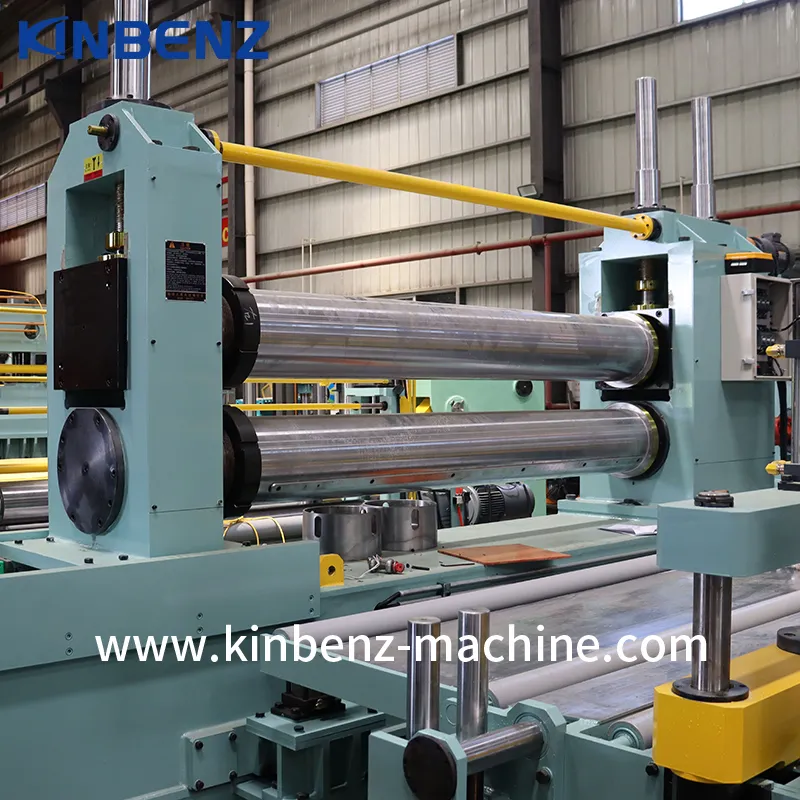
2025-08-31
When it comes to purchasing a metal coil slitting line, one of the first things your equipment supplier will ask is:
"What's your max coil width, thickness range, coil weight, and material type?"
It may seem like a routine question, but in fact, these four specifications are critical to building the right slitting line - in terms of performance, budget, safety, and long-term value.
At Kinbenz, we specialize in tailor-made slitting line solutions. Here's why we need these four data points before offering a quote or layout drawing - and how they shape your custom machine.
1. Max Coil Width - Determines Machine Frame and Blade Shaft Size
The maximum coil width tells us the total width of material your slitting line must handle.
This affects:
- The width of the decoiler, slitter head, tension unit, and recoiler
- The number and width of blades we can install on the slitter
- The overall frame width, shaft length, and material feed guides
2. Coil Thickness Range - Defines Drive Power & Blade Settings
Knowing your coil thickness range helps us calculate:
- Required motor and hydraulic power
- Blade clearance and penetration depth
- Tension control type
3. Max Coil Weight (Capacity) - Impacts Decoiler & Recoiler Design
The maximum coil weight is cruical for sizing:
- Decoiler drum & hydraulic expansion shaft
- Mandrel bearing type & load capacity
- Recoiler torque and back tension system
4. Material Type - Affects Blade Choice and Line Configuration
Not all metals behave the same. Whether you're working with stainless steel, copper, aluminum, or high-strength carbon steel, the material type determines:
- What blade material to use
- The line speed limits
- Whether anti-scratch features are needed
Why These Four Specs Are Non-Negotiable
Without accurate data on:
- Max Coil Width
- Thickness Range
- Max Coil Weight
- Material Type
...any slitting line quote would be incomplete or inaccurate.
It's like designing a car without knowing how many passengers it needs to carry or where it will be driven. You risk overpaying for features you don't need - or worse, ending up with a machine that can't run your materials.
Help Us Help You
At Kinbenz, we don't believe in one-size-fits-all machinery. By providing these four parameters, we can:
- Recommend the right slitter head and recoiler design
- Offer a cost-effective configuration for your production
- Ensure future-proofing for different material specs
- Shorten your quotation and layout time
FAQ: Common Questions from Buyers
Q1: What if I process multiple materials on the same line?
A: Let us know all materials you plan to run - we can design for the widest spec range to fit different material requirements
Q2: Can I upgrade coil width or weight later?
A:We don't suggest that. Many structural parts are fixed, that's why it's best to plan for your future capacity now.
Q3: Do you offer machien drawings before we order?
A: Yes. After receiving your coil specs, we can provide basic layout drawings and technical discussion to help you decide.
A good slitting line starts with accurate communication. By sharing your coil width, thickness, weight, and material type, you're not just filling in a form - you're shaping a line that will serve your factory for the next 10+ years.
When it comes to purchasing a metal coil slitting line, one of the first things your equipment supplier will ask is:
"What's your max coil width, thickness range, coil weight, and material type?"
It may seem like a routine question, but in fact, these four specifications are critical to building the right slitting line - in terms of performance, budget, safety, and long-term value.
At Kinbenz, we specialize in tailor-made slitting line solutions. Here's why we need these four data points before offering a quote or layout drawing - and how they shape your custom machine.
1. Max Coil Width - Determines Machine Frame and Blade Shaft Size
The maximum coil width tells us the total width of material your slitting line must handle.
This affects:
- The width of the decoiler, slitter head, tension unit, and recoiler
- The number and width of blades we can install on the slitter
- The overall frame width, shaft length, and material feed guides
2. Coil Thickness Range - Defines Drive Power & Blade Settings
Knowing your coil thickness range helps us calculate:
- Required motor and hydraulic power
- Blade clearance and penetration depth
- Tension control type
3. Max Coil Weight (Capacity) - Impacts Decoiler & Recoiler Design
The maximum coil weight is cruical for sizing:
- Decoiler drum & hydraulic expansion shaft
- Mandrel bearing type & load capacity
- Recoiler torque and back tension system
4. Material Type - Affects Blade Choice and Line Configuration
Not all metals behave the same. Whether you're working with stainless steel, copper, aluminum, or high-strength carbon steel, the material type determines:
- What blade material to use
- The line speed limits
- Whether anti-scratch features are needed
Why These Four Specs Are Non-Negotiable
Without accurate data on:
- Max Coil Width
- Thickness Range
- Max Coil Weight
- Material Type
...any slitting line quote would be incomplete or inaccurate.
It's like designing a car without knowing how many passengers it needs to carry or where it will be driven. You risk overpaying for features you don't need - or worse, ending up with a machine that can't run your materials.
Help Us Help You
At Kinbenz, we don't believe in one-size-fits-all machinery. By providing these four parameters, we can:
- Recommend the right slitter head and recoiler design
- Offer a cost-effective configuration for your production
- Ensure future-proofing for different material specs
- Shorten your quotation and layout time
FAQ: Common Questions from Buyers
Q1: What if I process multiple materials on the same line?
A: Let us know all materials you plan to run - we can design for the widest spec range to fit different material requirements
Q2: Can I upgrade coil width or weight later?
A:We don't suggest that. Many structural parts are fixed, that's why it's best to plan for your future capacity now.
Q3: Do you offer machien drawings before we order?
A: Yes. After receiving your coil specs, we can provide basic layout drawings and technical discussion to help you decide.
A good slitting line starts with accurate communication. By sharing your coil width, thickness, weight, and material type, you're not just filling in a form - you're shaping a line that will serve your factory for the next 10+ years.





